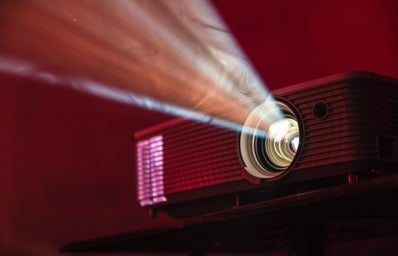*Trigger warning: This article discusses topics of domestic violence, sexual violence, physical and emotional abuse, depression and suicide.
The media has an influential way of placing rose-colored glasses on its audiences when it comes to portraying relationships and romantic ideals. So, what is the danger in this? Red flags go unseen when everything is rose-colored. Whether this is through television, books, movies or even celebrity lives, toxic relationships in the media are not only normalized, but they are also dangerously glorified.
The problem with toxic relationships displayed through the media is that unhealthy relationships are passed on as healthy ones. In television shows, movies and books, the media often masks the toxicity of certain relationships between characters with the idea of ‘passionate and intense romance.’ They give audiences traditionally attractive characters with ‘hot, sexy and exciting’ relationship tropes, creating a sense of desire for the same thing in our personal lives. (Spoiler: there is nothing hot or sexy about being toxic.) However, with these messages and ideas of ‘relationship goals’ flooding our perspectives, it is easy to get caught up in the glamour of it. We might find ourselves wanting a relationship as passionate as the one in our favorite television show, leading us to ignore the signs of an unhealthy, or even abusive, relationship.
There’s nothing wrong with bringing abusive or toxic relationships into television, books or movies, as it can be informational and bring awareness to relationship violence; but glamorizing these relationships is the problem. Issues arise when toxic relationships are used as drama for entertainment purposes.
Target Audiences
The media has a significant platform for spreading societal messages. It can shape our ideas about how society works and influence our beliefs.
Media sources that most often portray toxic relationships are targeted at teen or young adult audiences. This is extremely dangerous, as ideas about relationships, love and intimacy start at a young age and are highly influenced by what we are constantly exposed to. If television shows, movies and books directed towards teens and young adults use toxic relationships for entertainment, covered up by intense love tropes, young people’s ideas about love and intimacy are limited to this constant exposure.
The idea of healthy love and relationships is also rarely taught to teens. This approach of ‘figure it out as you go’ when it comes to first relationships in adolescence increases the chances for teens to find themselves in toxic relationships. Sometimes they may not even realize the situation is toxic because they have never been taught or exposed to anything different. Adding the glamorization of unhealthy love and intimacy from the media, only increases the chances of toxic relationships among teenagers. This also has the potential to create a cycle of toxic ideas about love and enables abusive relationships throughout their entire life. “Most of us find we replicate early childhood relationship dynamics in our adulthood. Usually, the kinds of relationships we have witnessed or experienced growing up are typically what we are drawn to as adults,” says Dr. Sarah Davies, psychologist and author of Never Again: Moving On from Narcissistic Abuse and Other Toxic Relationships. There is a strong need for proper education on the difference between healthy and unhealthy relationships for teens.
Examples of Toxic Relationships in Popular Shows & Movies
A toxic relationship can come in many different forms, some forms of toxicity being more obvious than others. Katie Hood, CEO of One Love Foundation, breaks down different types of toxic traits often seen in relationships. According to Hood, a relationship is toxic if it encompasses intensity, manipulation, sabotage, guilting, deflecting responsibility, possessiveness, isolation, belittling, volatility and betrayal. Toxic relationships can also have lack of boundaries, stalking, ultimatums, control, lacking trust, love-bombing, gaslighting and more. Let’s take a deeper look into these toxic traits and the underhanded tactics that the media uses to display them as ‘love’ or ‘passion’ in relationships.
In the series Gossip Girl, Blair and Chuck are a fan-favorite couple, with many fans idealizing their relationship as ‘goals’ or a ‘power couple.’ However, their relationship is filled with manipulation, lacking trust and control. Much of the beginning of their romance is filled with playing games and using bets in their relationship to get what the other wants. At one point, Chuck even blames Blair for his cheating. However, show makers have fans wrapped around the idea that Blair and Chuck are ‘endgame,’ meaning nothing can tear them apart and the games they play make their relationship more exciting and passionate, disguising the toxic traits they display.
Media directed at teen audiences also has a tendency to normalize teen-adult relationships, glamorizing the idea of a ‘forbidden romance.’ If it isn’t obvious enough, the problem with this is it is romanticizing (very illegal) relationships between minors and adults. This dangerously blinds teens to possible manipulation and grooming by older adults in romantic or intimate settings. One example of this in television is the relationship between Aria and Ezra in Pretty Little Liars. If you’re not familiar with the show, Aria, a high school student, and her English teacher, Ezra, become involved romantically. The show constantly pushes the idea that the two are ‘star-crossed lovers’ and that their ‘forbidden love’ was what made the relationship exciting. The idea that the pair were ‘soulmates’ was constantly pushed throughout the series, and they even ended up getting married at the end of the show, further romanticizing the illegality and manipulation of their entire relationship.
The Twilight Saga gave teens one of the biggest fantasy romances of our generation. What could be toxic about an iconic love triangle, sexy vampires and hot werewolves? It turns out a lot. In the book and film, Bella is a teen high school student, and Edward is also in high school, except about 100 or so years older. Looking closely at the start of their relationship, Edward uses manipulation and grooming tactics to win over Bella as he has years (about a century) over her when it comes to his experience with intimacy. Let’s also not forget the scene when he appears in her bedroom in the middle of the night because he loves ‘watching her sleep;’ romantic or creepy? Their relationship is also dangerously codependent. This is displayed when Edward breaks up with Bella, leaving her extremely depressed and even suicidal. In their relationship, Bella was isolated from family and friends because of the time and commitment she was giving to Edward, contributing to her loneliness and depression post-breakup. However, the unhealthy relationship between the pair is, like Aria and Ezra, covered up by the idea of ‘star-crossed lovers.’ Bella and Edward’s relationship is even based on the story of Romeo and Juliet, again with the glamorized theme of a ‘forbidden love.’ Edward’s toxic traits are also masked by the ‘hot vampire’ trope and Bella’s struggles with mental health are overlooked through the romanticization of her depression.
Intensity Mistaken for Intimacy
The fantasy of glamorizing toxic relationships, and even abuse, happens when intensity is mistaken for intimacy. This is the disguise that many shows, movies and books use to cover up toxic traits and unhealthy love. “Intensity is immediate, and the intense chemistry that comes with it can lead people to become lost in an exciting fantasy,” says Davies. They instill in their audiences a desire for passionate love, portrayed very intensely on screen or paper. These types of relationships often start out fast and strong, with the idea that intensity in relationships is the most desired form of intimacy. “Abusive relationships don’t start out abusive. They start out exciting and exhilarating,” says Katie Hood. These toxic messages from the media can also dangerously blur the lines between intensity and passion, and nonconsensual intimacy and sexual violence in relationships.
The Idea That ‘Love is Pain’
I’m sure we’ve all heard the expression ‘love is pain.’ Why do we say this again? Does it actually make any sense? It is this idea that, somewhere in the history of society, was instilled in us to think that the two go together, and you can’t have love without pain. Sure, relationships aren’t always easy breezy, and hard times will come, but ‘painful’ is not a word I would use to describe a healthy relationship.
We see this idea played out in the television show Euphoria. Now, Euphoria does not try to cover up the fact that Nate Jacobs is extremely toxic; in fact, it is part of the show to accurately portray the dark realities of toxic relationships. Euphoria does, however, give us a great example of how toxic behavior can be hard to identify, and harder to walk away from, when mixed with the idea that “this is what love is.” In the show, Cassie talks about her toxic relationship with Nate and exclaims teary-eyed, almost as if she is trying to convince herself that she’s “never, ever been happier.” However, we cannot judge Cassie so easily. It is important to see how unhealthy behavior is tolerated in relationships due to our constant exposure of this in the media.
In the media, we even see the “love is pain” toxicity romanticized in celebrity lives. When Machine-Gun Kelly proposed to Megan Fox, he posted that the engagement ring he got Fox was made of actual thorns, meaning if she ever took it off it would inflict physical pain. This might appear obviously toxic, but when portrayed by the media as an act of love or commitment, it is instantly romanticized.
The ‘Good Girl, Bad Boy’ Trope
A relationship trope that the media seems to not get enough of is the ‘good girl, bad boy’ dynamic. The idea that ‘he hates everyone but me,’ or ‘I can fix him’ is extremely toxic. However, it is overlooked as being unhealthy because of the glamorization of the popular trope. The ‘good girl falls for the bad boy’ idea in the media allows male characters to get away with toxic and abusive behaviors.
We see this in teen shows and movies like Vampire Diaries’ Damon and Elena, After’s Tessa and Harden and going all the way back to Grease’s Sandy and Danny. The trope normally goes like this: the guy disrupts her life, she thinks she can change him, and they continue a very problematic relationship. The key in this trope is the idea that she can ‘fix him.’ This trope depends on the idea that the girl is nice and naive enough to fall for the mysterious yet toxic guy. Not only is this idea degrading to women, but it enables abusive relationships to play out in real life due to the highly idolized idea of this unhealthy relationship dynamic.
Romanticizing Abuse & The Abused
Another danger with the glorification of toxic relationships is that abuse and the survivors of abuse are also romanticized. Abuse is dangerously disguised as an act of love. In Euphoria, Nate and Maddy as a couple are meant to display a toxic teen relationship, as the show strives to show real examples of struggles adolescents face that are normally seen as too uncomfortable to talk about. That being said, the psychological and eventually physical abuse that Maddy faces in her relationship with Nate shows how abuse in teen relationships can be romanticized, causing the abused to keep going back to their abuser. Maddy keeps going back to Nate because she truly believes he loves her and finds comfort in the security he gives her.
However, it is always important to remember: someone who “loves you” would not do that to you, and telling someone you love them is never an excuse for abuse.
The Statistics
The World Health Organization has reported that domestic violence is a public health issue. The aftereffects of domestic violence can affect the health of the entire person including physical, mental and sexual health.
The HELP Save Foundation gives us statistics on the prevalence of domestic violence in the U.S.
“On average, nearly 20 people per minute are physically abused by an intimate partner in the United States. During one year, this equates to more than 10 million women and men.”
“1 in 3 women and 1 in 4 men have been victims of [some form of] physical violence by an intimate partner within their lifetime.”
“On a typical day, there are more than 20,000 phone calls placed to domestic violence hotlines nationwide.”
“Intimate partner violence accounts for 15% of all violent crime.”
“Women between the ages of 18- 24 are most commonly abused by an intimate partner.”
“Domestic victimization is correlated with a higher rate of depression and suicidal behavior.”
Domestic Violence Services also gives us statistics on the prevalence of teen dating violence.
“Roughly 1.5 million U.S. high school boys and girls admit to being hit or physically harmed in the last year by someone they are romantically involved with.”
“1 in 3 girls in the U.S. is a victim of physical, emotional or verbal abuse from a dating partner.”
“1 in 10 high school students has been purposefully hit, slapped or physically hurt by a boyfriend or girlfriend.”
“Only 33% of teens who were in an abusive relationship ever told anyone about the abuse.”
“81% of parents believe teen dating violence is not an issue or admit they don’t know it’s an issue.”
Love is Respect gives us statistics on college dating violence.
“43% of dating college women report experiencing violent and abusive dating behaviors.”
“College students are not equipped to deal with dating abuse – 57% say it is difficult to identify and 58% say they don’t know how to help someone who’s experiencing it.”
“One in three dating college students has given a dating partner their computer, email or social network passwords and these students are more likely to experience digital dating abuse.”
“One in six college women has been sexually abused in a dating relationship.”
It is easy when looking at statistics like these to think, “something like that would never happen to me.” However, statistically speaking, if it hasn’t happened to you, there is still a high chance it has happened to someone close to you. Many cases of domestic and intimate partner violence go unreported.
The truth is, domestic violence can be an uncomfortable subject to talk about. However, it needs to be talked about, especially among teens and young adults who are figuring out love and intimacy for the first time in a society that not only normalizes, but glamorizes toxic and abusive behavior.
Domestic Violence Awareness
Domestic violence is a growing epidemic in our society. The danger in unhealthy messages from the media is that it perpetuates this relationship violence, especially in teens and young adults. Domestic violence in high school and college relationships often goes unnoticed or brushed off because of the normalization and glamorization of toxic traits in romantic relationships exposed to young people.
It is extremely important to understand that domestic violence and abuse is never the fault of the victim, and there are many complex reasons that people stay in abusive relationships. “Abuse sneaks up on us, disguised as unhealthy love,” explains Hood. People stay, or feel trapped, in toxic and abusive relationships for a number of reasons. They might find security in the familiarity of the relationship or believe the abuse they face is normal because it is all they know.
There is also a psychological phenomenon occurring when a cycle of abuse takes place in a relationship. “The huge highs and lows that come with a toxic relationship actually affect our brain chemistry and can trigger a real addictive pattern,” explains Davies. “We crave another ‘fix’ of the high, exactly like a drug.”
The real danger that lies within the issue of domestic and intimate partner violence prevalence in our society is, it requires someone close to us, someone we trust and love, to purposely inflict physical and/or psychological pain onto us. Just because something happens behind closed doors, doesn’t mean it didn’t happen, and therefore should never be shut down or dismissed.
resources
Domestic Violence Hotline: 1-800-799-SAFE (7233) (Available 24/7)
Lumina Alliance (SLO local)
Domestic Violence Resource Center
Call or Text Domestic Violence Hotline and Information: Love is Respect
Confidential Sexual Assult Hotline and Information: Rainn
Shelter Finder: Safe Horizon


